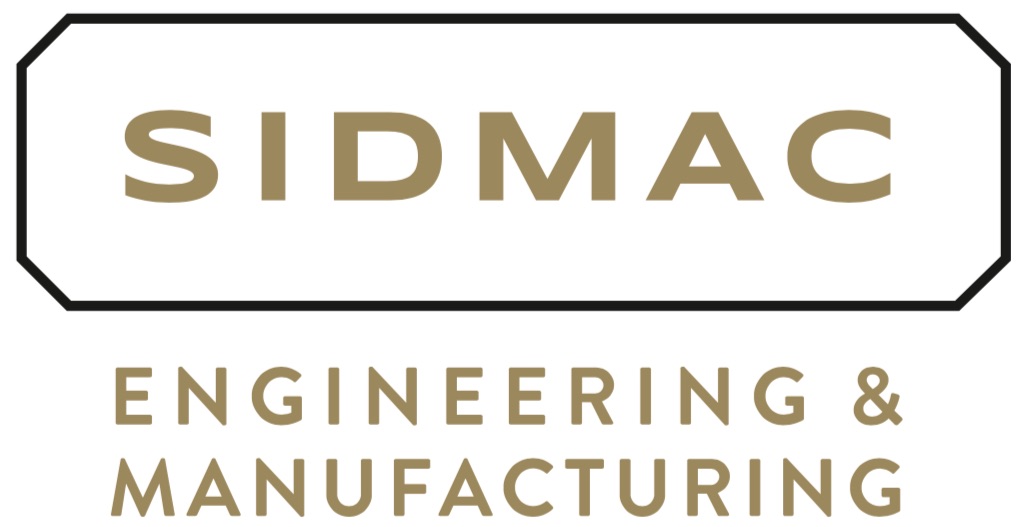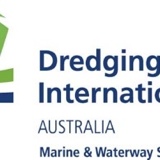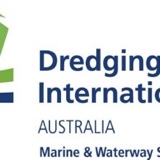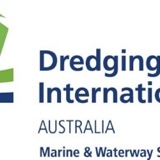Title Page
-
Site conducted
-
Conducted on
-
Vessel Name
-
Location
-
Attendees
-
Author
Transportation Details
-
Breadth
-
Lenghth
-
Draught
-
Ship type
-
Call sign
-
IMO
-
MMSI
-
Passenger capacity
-
Wave height operation limitation
-
Wind speed operation limitation
Emergency Contact
-
Master
-
Site manager
-
Contractor HSE
-
Onshore support
-
Agency
Bridge Documents
-
Small boat certificate (include equipment list)
-
Vessel Nationality Certificates
-
Ship registration certificates
-
Tonnage certificate
-
Load Line Certificate
-
Are load-line/draught markings clearly visible on the vessel hull?
-
Minimum safe manning certificates
-
Certificate of Classification
-
Inspection Record issued by MPB
-
Repairing record
-
Closed CMID inspection report within a year.
-
Ballast Water Management Plan inc Ballast Water Certificate.
-
Insurance covers Ship Owners' Liability (ex.P&I).
-
Insurance covers vessels hull and machinery (ex.H&M).
-
Insurance covers passengers' life and harm
-
Radio station license
-
Has the vessel had a recent internal HSE audit/inspection? and the details.
-
If carrying dangerous goods, does the vessel have a document of compliance for the carriage of dangerous goods (IMDG)?
-
Is a copy of the safety inspection/audit available for review.
-
Detail when was the last onboard safety inspection/audit carried out. and who carries out.
Logbooks
-
Is the Deck log maintained at sea and in port?
-
Is the Engine log maintained at sea and in port?
-
Is the GMDSS log maintained at sea and in port?
-
Is the Garbage logbook up to date with correct entries? Garbage log-book is maintained and up to date (check Log-book entries include signature by master of the ship, date, time, position of ship, garbage type, estimated vol and, if applicable, reasons for unapproved discharges).
-
Is the Oil record book being correctly maintained at sea and in port? Oil Record Book is maintained and up to date and waste oil receipts available.
-
Ballast Water Record Book is maintained and up to date
-
Waste receipts (garbage and controlled) available & signed. Consignment notes must incl. tracking, date, waste type, quantity & be kept for at least 3 yrs.
-
Bunkering receipts and checklists available
Radio and Navigation Safety
-
Is a certified ENC utilized?
-
Is the ENC up-to-date? and included the work area?
-
Is hard copy of navigational chart available onboard and evidence of usage?
-
Is the vessel fitted with operational radar (at least 1 x-band)?
-
Does the AIS work?
-
Are compass errors regularly recorded?
-
Is radio equipment in working order?
-
Is there an EPIRB fitted onboard the vessel?
-
Is there a SART fitted onboard the vessel?
-
Are emergency handheld VHF radios available?
-
Are all navigation lights in working order?
-
Is there a means fitted for making an efficient sound signal?
-
Is there an operational search light onboard?
-
Is the vessel fitted with a magnetic compass and is it in working order?
-
Is there evidence of written handovers between Master’s at crew change?
Stability and Freeboard (technical part included)
-
Does the vessel have an approved stability book?
-
Is there an approved stability computer in use on the vessel? if there is ballast or additional survey equipment installed onboard.
-
Are procedures in place to govern vessel stability through all stages of vessel operations?
-
Does the Master and Crew understand the stability issues associated with winches and lifting operations?
-
Are there records of stability calculations and past conditions onboard?
-
Are load-line/draught markings clearly visible on the vessel hull?
Mooring
-
Is there anchor onboard?
-
By machine or drop by crews manually?
-
Where is the anchor?
-
Are anchor windlass operate properly?
-
Are crews competent for operating the anchor windlass?
-
Is there a towing hook onboard?
-
Is there a protection between the towing hook and the bridge?
Training, certification and experience
-
Do the Master and Crew have the required mandatory training certification?
-
Do all the crew hold valid medical fitness certification?
-
Is the vessel manned in accordance with the Minimum Safe Manning Certificate?
-
Does any of the crew hold slinging and lifting certification?
-
Are crane ops, 8 and slingers suitably qualified and experienced?
-
Does the vessel have a formal documented HSE induction process.
Protection of crew
-
Is following PPE available to vessel crew: <br>•Safety Helmet (Hard Hat);<br>•Safety Boots;<br>•Life jacket<br>•Suitable Work wear fully covering arms and legs;<br>•Suitable Work wear with high visibility;<br>•Safety Glasses
-
Good condition of PPEs
-
Is all mandatory PPE seen to be worn by vessel company during audit.
-
Lifejackets with inspection record?
-
Life jacket with approved PLB (AIS function.)
-
PLB tested and worked.
-
Are the crews familiar with how to operate the PLB?
-
Is suitable storage for PPE available which is separate to off duty attire.
-
Are surplus stocks PPE available for contingency (contamination, breakage etc.).
-
Is there a PPE Matrix available and posted.
-
Are noisy compartments identified and access controlled with hearing protection provided?
-
Are confined spaces clearly identified and entry controlled as per confined space entry management?
-
Is "gas detector" monitoring equipment available and calibrated?
Life saving appliances
-
Is general arrangement layout placed in appropriate location?
-
Is the vessel correctly fitted with life rafts sufficient for the maximum People on Board (POB)?
-
Are the life rafts inspected within the last year with certificates available.
-
Are instructions for use available next to RFD’s
-
Do the life rafts have hydrostatic releases, inspected within the last year with certificate available.
-
Are there instructions for use for manually releasing hydrostatic release.
-
Are sufficient lifebuoys available and correctly rigged?
-
Is there sufficient approved life jackets available on-board for all personnel and in good condition.
-
Are there the required number of pyrotechnic distress signals onboard the vessel and are they in date?
-
Are there effective means to recover a person from the water?
-
Is there a general alarm fitted and operational?
-
Is all LSA of an approved type?
-
Are training manuals for LSA carried onboard?
-
Are certificates available for all LSA on board
-
Are the crew familiar with the use and operation of all LSA?
-
Is there evidence of periodic inspection/testing of LSA?
Safe boarding of vessel, deck, ladder access, hatches/Opening
-
Is there a register of all personal movements on/off board.
-
Is there safe access rigged to the vessel?
-
Was the gangway manned when you arrived.
-
Is boarding of the vessel possible in a safe way?
-
Are walkways and no-go zones clearly marked/painted.
-
Is deck access and egress free from obstructions.
-
Are there adequate guard rails around the deck?
-
Is the deck non-slip?
-
Is the deck areas free from loose materials, oil/fuel, if not, are hydrocarbons and chemicals bunded to 110% capacity
-
Are the working areas on deck uncluttered to allow sufficient unrestricted room for working activities.
-
Are all fixed access ladders suitable for use.
-
Are there any temporary ladders in use, (detail condition of ladder).
-
Will these ladders be intended to be in use when underway.
-
Are elevated working areas fitted with a railing?
-
Are hatches and tank openings marked?
Construction, watertight and watertight integrity
-
Is it possible to secure all openings to prevent water ingress at sea?
-
Are all doors and openings on the main deck level that give access to spaces below deck water-tight?
-
Can all opening port-lights be effectively secured?
-
Can all vents be closed to prevent ingress of water?
-
Is the hull and structure of the vessel in visually good condition maintaining structural and watertight integrity?
-
Are freeing ports/draining ports clear of obstruction?
-
Is there evidence of any water ingress below decks?
-
Are the paintwork and coatings in good condition?
Machinery & cable, electrical safety
-
Is all machinery and electrical equipment functioning correctly and free from defect?
-
Is there a preventative maintenance plan in place for machinery and maritime equipment.
-
Are there maintenance records onboard for all machinery?
-
Are portable hand tools in operational condition.
-
Are portable electrical tools maintained (includes extension leads etc.).
-
Is Critical Equipment clearly identified?
-
Are critical spares available onboard?
-
Are machinery spaces clean and free from leaks?
-
Are bilges clean and free of residues?
-
is the vessel fitted with certified bulge pump volume?
-
Are the bilge pumps operational?
-
Is the engine room/workshop machinery guarded?
-
Is the engine room flooring free from slips trips and falls hazards.
Lifting equipment/towing (if applicable)
-
Is the vessel supplied with emergency towing equipment and manual?
-
Are procedures in place for lifting and towing operations?
-
Preventive maintenance (PM) programme for crane in place (include pre-use checks documentation).
-
Are emergency response procedures well documented with regards to towing and lifting operations?
-
Is lifting and towing equipment covered in the planned maintenance system onboard?
-
Crane Examination Certificate
-
Last Inspection certificate - reference (within the last 12 months)
-
Lifting appliances certificates/register?
-
Ships company crane operators, slingers competent? (review cert of competence).
-
Are shackles and wires used in towing and lifting operations of an approved construction and certified for use?
-
Does the vessel have a system in place for the quarantine of damaged or uncertified lifting equipment?
-
Emergency stop push button located on Crane (are they considered serviceable and included on the PM programme)? Are emergency stops/releases tested regularly?
-
Are all cranes suitable for use and have inspection and load test certificates.
-
Date of vessel main crane inspection (detail Crane number).
-
Date of vessel main crane load test (detail crane number).
-
SWL Details of Main Crane and marked up on crane.
-
All crane controls clearly marked and manufacturer’s manual available.
-
Are environmental limits for operations defined and aligned with client requirements (wind, wave height etc.)?
-
Are winches in visually good order?
-
Slings, Shackles, eyebolts and lifting gear covered by valid inspection certificate.
Fire protection, detection and fighting
-
Are fire detectors and call points, where fitted, in working order?
-
Is the vessel fitted with a fire pump?
-
Is the vessel fitted with an Emergency fire pump?
-
Are machinery spaces adequately covered by fire detection and extinguishing systems?
-
If available are hydrants and hoses in working order?
-
Are portable extinguishers of sufficient quantity and appropriate type?
-
Are certificates of inspection available for all fire fighting equipment on board?
-
Is a fire blanket installed in the galley area?
-
Are crew familiar with the use of all fire fighting equipment (FFE) on the vessel?
-
Are firefighting action emergency response team fully briefed and trained to fight chemical fires (procedure also to be reviewed).
-
Can ventilization of engine room be shut down?
-
Is there a drawing / document identifying all locations of firefighting equipment/assets (FFA).
-
Are the FFA checked/inspected on rounds, and is this documented (detail document number).
-
Are FFA maintained and certificates for maintenance retained (detail where they are kept).
-
Are fire hoses, fire lines, hydrants, nozzles in good order.
-
Are fire hoses and nozzles and hydrants regularly tested.
-
Are fire pumps operational tested and maintained.
-
Are extinguishers in good order with type and their use clearly indicated?
-
Are extinguishers periodically tested and inspected by a competent approved servicing agent.
-
Are firefighting suits and equipment in good order
-
Breathing Apparatus (BA) sets in good order (including harness), fully charged and ready for use.
-
BA sets routine checks carried out (via check on weekly routine).
-
BA bottles last pressure test.
-
Are all areas of the vessel covered by fire detection equipment.
-
Fire detection equipment regularly tested (is there an auto test facility on system).
-
Drying room available and free from fire hazards
-
Are fuel tanks marked with the warning that heat and open fire could be dangerous?
-
Can fuel supplies be isolated in an emergency?
Environmetal pollution prevention
-
Does the vessel have a SOPEP plan?
-
Are arrangements in place to prevent the discharge of oil/oil-contaminated water overboard?
-
Are arrangements in place for handling oily wastes?
-
Are adequate arrangements in place to prevent the discharge of sewage in prohibited areas?
-
Is there sufficient SOPEP equipment available onboard? does it need replacing?
-
Does SOPEP periodically recorded and inspected?
-
Are drip trays fitted under oil stores and oil driven machinery?
-
Are stored drums of oil, thinners, paint and chemicals properly closed?
-
Are oil, paint, thinners and chemicals stored separately in stores convenient for this purpose?
Incident reporting and investigation
-
Does the vessel have arrangements to report and manage Incident, Near Miss & Dangerous Occurrence reporting.
-
Does the vessel have formal documented accident investigation procedures.
-
Are the master and vessel management aware of accident investigation procedures.
-
Are accidents, incidents reports being filed.
-
Are there any outstanding non-conformances / open incidents actions for any accidents / incidents (If Yes provide details).
Emergency procedures
-
Are formal emergency response procedures and plans available for use in the event of an emergency on board? (Fire, grounding, collision etc.)
-
Are the emergency plans vessel or project specific.
-
Do the Master and Crew understand the actions to take in the event of an emergency?
-
Are there at least two means of escape from any occupied area?
-
Are all emergency escapes identified?
-
Are emergency escapes clearly marked, well illuminated and free from obstruction?
-
Are escape hatches and emergency exits free to open and marked with ‘EMERGENCY EXIT KEEP FREE’?
-
Are permanent obstacles like lashing eyes, low passages, .. painted in a striking colour?
-
Is the Vessel emergency contact list (telephone number, hospital..) up to date (identify where kept and last reviewed).
-
Is there a dedicated muster point.
-
Is there dedicated alarms for fire and abandon ship.
-
Is there a Man Overboard (MOB) Alarm
-
Is there a Jasons Cradle or similar equipment used for MOB retrieval. If not how is a MOB recovered?
-
Are there dedicated life rings available on deck, to cover port and starboard, fwd and aft.
-
Are signal pyrotechnics kept readily available in a secure locker (lockable, dry and ventilated potential for build-up of phosgene gas).
-
Are signal pistols used? If so are they kept separate to the pyrotechnics?
-
Do signal pyrotechnics have Maker, Date and Lot numbers on.
-
Are all pyrotechnics and signal pistols secured whilst in port?
-
All communication equipment (including SART & EPIRB) to be programmed to the vessel’s MMSI and Call Sign.
-
Is there an EPIRB available and in date for inspection.
Drills
-
Does the vessel undertake regular emergency drills?add date of the last drill
-
Have any drills involving shore side services been done in the last 12 months?
-
Are the procedure tested by drills or exercise.
-
Is there a record of safety drill exercise on board (does it include the following):<br>Abandon ship drill.<br>Fire/ Emergency drill.<br>Man Overboard drill.<br>First Aid drill.<br>Damage Control drill.<br>Security Exercise drill.<br>Pollution (spill drill).
Medical care, first aid
-
Are the sick bay/dispensary facilities adequate for vessel and solely used for this purpose.
-
Can the vessel master call upon specialist medical advice if required (identify how and who provides this service).
-
Does the vessel carry adequate medical supplies for the area of operation and number of crew?
-
Is there a vessl medivac procedure in place?
-
Does the vessel have dedicated first aiders (if yes identify numbers and qualifications) on board, in every shift, in remote areas?
-
Are first aid kit, stretcher and defibrillator (AED) available?
-
Is an available AED with pads, in date for service and working, (complete check)
-
Is there a qualified AES operator onboard?
-
Are those locations clearly indicated and does the crew know this?
-
Is used first aid stuff being replenished?
Crew accommodation
-
Is crew accommodation clean and tidy with suitable sleeping and washing/showering facilities?
-
Is all equipment secured?
-
Is the vessel fitted with air conditioning?
-
Number of berths and accommodation for Crew and Contractors.
-
Acceptable standard of decoration and lighting.
-
Acceptable standard of furnishing and fittings.
-
Crew spaces free from vessel stores and fittings.
-
Escape plans posted in accommodation:<br>Escape routes clearly marked.<br>Escape routes clearly lit.
-
Are emergency escapes clear of obstructions and clearly marked?
-
Are internal stairways, ladders, and doors all in good order?
Ventilation and lighting
-
Ventilation system working.
-
Ventilation system Periodically Maintained (PM) for Legionella hazard (dosing, monitoring etc.).
-
Are following spaces sufficiently ventilated? Office and cabins, accommodation, gallery, bridge, control rooms, engine/steering and pump rooms, battery rooms, stores (special attention to inflammable, poisonous and explosive substances), and places with heat radiant sources (e.g. welding)
-
Are following spaces suffciently lighted? All working places, exits and entraces, dangerous opening, store rooms, places where is being hoisted, corridors and stairs, deck and working areas.
-
Is Emergency lighting operational if fitted?
House keeping and waste disposal
-
Are vessel compartments uncluttered, to a good state of housekeeping.
-
Are tripping hazards marked?
-
Are vessel compartments access and egress free from obstructions.
-
Waste collection facilities are maintained/labelled.
-
Waste is stored & secured to prevent leaks / spills / odour
-
Is material arranged orderly and stacked neatly?
-
Is wasted disposed ashore to an authorized waste disposal company?
-
Is chemical waste stored separately?
-
Are flammable debris cleared to a safe area?
-
Are any attempts made to minimize waste?
Sanitary and welfare
-
General standard of cleanliness?
-
Working area WC/ WC female available.
-
Wash rooms/showers with suitable cleaning aids (also review female arrangements).
-
Are suitable toilet facilities provided for all crew and passengers? General standard sanitary provision (W/C), includes showers?
-
No smoking in communal areas and No Smoking policy in force.
-
Recreational space available
Kitchen, Hygiene
-
Does the Chef have dedicated PPE, hat/hairnet and Apron/cooking whites? Is appropriate PPE supplied to catering staff for working in freezers/fridges?
-
Does the Chef have food hygiene qualifications.
-
Food scraps are macerated < 25mm and discharged beyond 3nm of territorial baseline or >12nm if > 25mm (check discharge coordinates)
-
Potable drinking water, has analysis been carried to confirm water drinking quality.
-
Is there sufficient potable water onboard the vessel?
-
Is the galley clean and tidy (floors, walls, door handles)
-
Are galley extractor fans working.
-
Are galley extractor fans free from grease
-
Is there hot water available in the galley.
-
Is a fire blanket and first aid kit available in galley
-
Is there a dedicated Hygienic area for preparing food? Area clean and appropriate for use?
-
Are colour coordinated chopping boards available for food preparation
-
Is there separate hand washing and food preparation sinks.
-
Is there a dedicated area or process for defrosting food.
-
Is there a dedicated food serving area.
-
Are there adequate storage facilities onboard? Dry food storage area, is it suitable and hygienic?
-
Is there a fresh food storage area, is it suitable and hygienic (Stored off the ground and in boxes)
-
Is there a refrigerator available, is it suitable and hygienic (Food types separated)
-
Is there a Freezer available, is it suitable and hygienic (Food types separated and stored of the ground)
-
"Are refrigerators and freezers temperatures being checked daily?
-
Are records/logs kept up to date?<br>Freezer -18 degrees C, Fridge – 4 degrees C
-
Is there a cleaning schedule in place
-
Is there suitable waste food disposal arrangements.
-
Does the vessel have adequate messroom facilities? Complete with tables and chairs?












